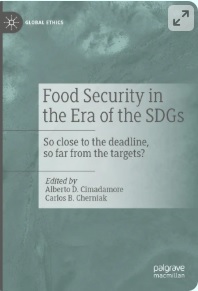Food distribution models in Latin America: Unraveling the effects of physical access on food security
Food security in the era of the SDGs
| Year | : | 2025 |
|---|---|---|
| Author/s | : | Álvaro Espinoza, Ricardo Fort, Mauricio Espinoza |
| Area/s | : | Health and nutrition |
Espinoza, A., Fort, R., & Espinoza, M. (2025). Food distribution models in Latin America: Unraveling the effects of physical access on food security. En A. D. Cimadamore & C.B. Cherniak (Eds.), Food security in the era of the SDGs (pp. 2011-235). Global Ethics. Palgrave Macmillan, Cham. https://doi.org/10.1007/978-3-031-83841-5_9
This chapter examines the role of food distribution channels in shaping physical access and its impact on food security in Latin America. The authors argue that the structure of downstream food supply chains—the relative prominence of modern supermarkets, traditional markets, and intermediate local stores—plays a critical but underexplored part in determining affordability and dietary choices.
Drawing on household survey data from Brazil, Ecuador, Peru, and Uruguay, the authors classify food retail outlets into three distinct channels and analyze their relationship with diet composition and nutritional intake. The descriptive findings reveal significant cross-country differences in food distribution models, with lower-income and rural populations tending to rely more on traditional and intermediate channels that offer lower prices.
However, the analysis uncovers a disconnect between these price differences and actual purchasing behavior, suggesting that physical accessibility may be a key barrier. The results of a probability model confirm that the type of food retail outlet accessed is strongly associated with the likelihood of meeting minimum dietary requirements, even after controlling for income, location, and other factors.
The chapter underscores the need for further research and tailored policy interventions that recognize the centrality of physical access in ensuring food security and promoting healthy diets.







